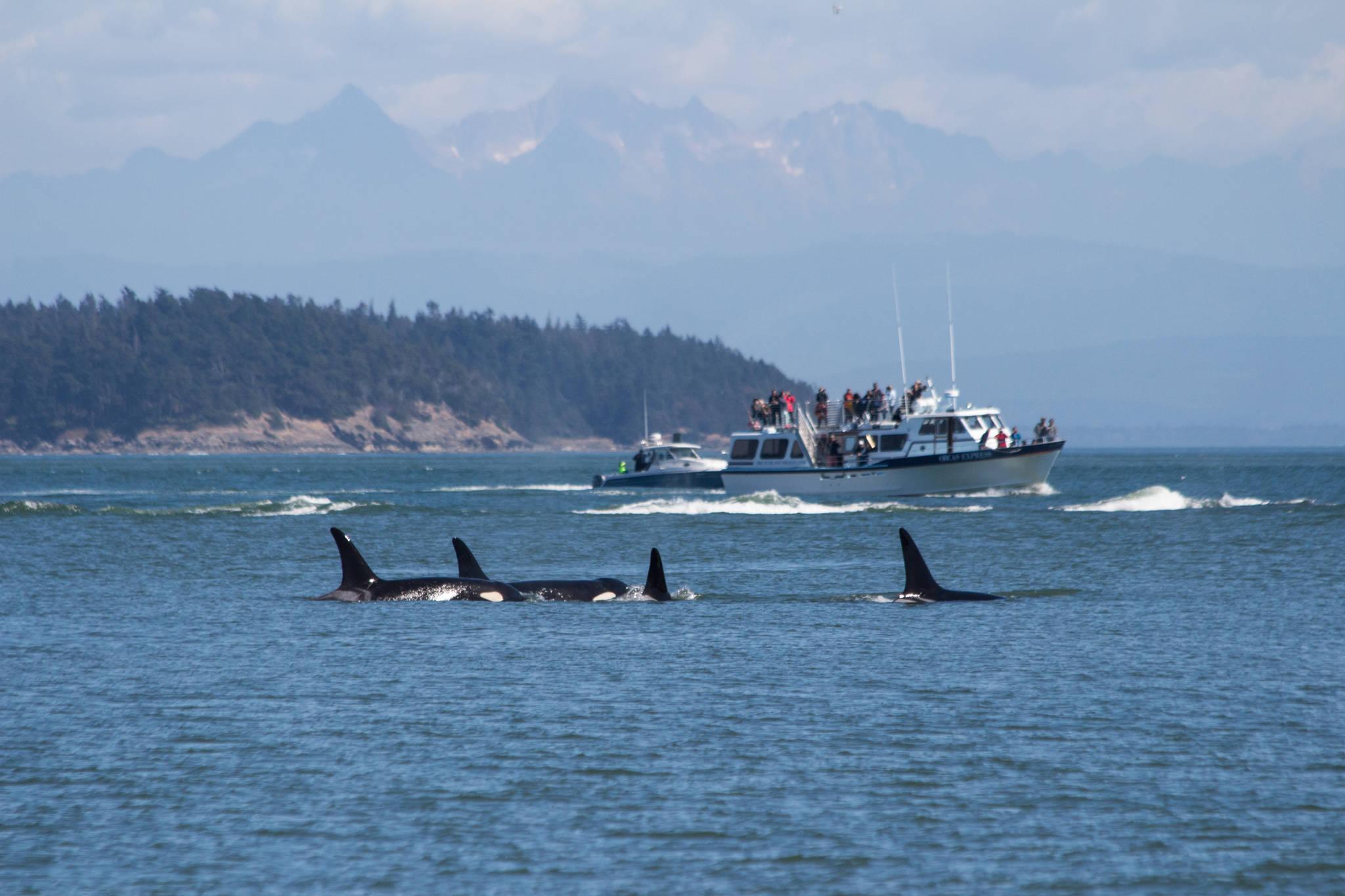Originally published by Washington Department of Fish and Wildlife
In spring 2019, the Washington Legislature passed Senate Bill 5577, a bill concerning the protection of Southern resident orcas from vessels, which developed a license for commercial whale watching and directed the Washington Department of Fish and Wildlife to administer the licensing program and develop rules for commercial viewing of the endangered species. (See RCW 77.65.615 and RCW 77.65.620)
The purpose of creating rules for commercial whale-watching of Southern residents is to reduce the impacts of vessel noise and disturbance on the orcas’ ability to forage, rest, and socialize while enabling sustainable whale watching
Draft rule language was developed in a year-long process and is being shared now for public comment and consideration by the Fish and Wildlife Commission.
There are two options under consideration, viewable at https://wdfw.wa.gov/sites/default/files/2020-10/cww_ab_combined.pdf, and available for public comment, visit https://www.surveymonkey.com/r/cwwrules to share your comment and view the rules.
Option A includes a three-month July-September season for motorized commercial whale-watching of Southern residents with two, two-hour periods per day where viewing the orcas is allowed at closer than one-half nautical mile (limit of three motorized commercial whale-watching vessels per group of orcas). In the final stages of drafting the proposed rule, text that would limit viewing to Friday-Monday was inadvertently included in Option A. WDFW is seeking comments on Option A as filed. The public is also welcome to comment on the possibility of daily viewing during those months.
Option B adds a shoulder season of two months on either side (May/June and October/November) of the main season. The shoulder season is Saturday-Sunday viewing only (limit of one motorized commercial whale-watching vessel per group of orcas) and the main summer season viewing (July-September) is Friday-Monday (limit of three motorized commercial whale-watching vessels per group of orcas). For days that allow viewing of Southern residents, there are two, two-hour periods.
Note: The seasons described in Options A and B only apply to the viewing of orcas by motorized commercial whale-watching vessels and do not restrict the viewing of other whales or marine mammals.
Both options propose formalizing the ‘no-go’ zone on the west side of San Juan Island (currently voluntary) for motorized commercial whale-watching vessels (100-yard corridor along the shore for kayaks). The no-go zone is included in both alternatives. It would apply year-round regardless of Southern resident orca presence.
License application processes, reporting and training requirements, kayak-focused measures, and AIS requirements are present in both options.
The Fish and Wildlife Commission will have a briefing and hearing on the proposed rules December 4-5, 2020. Per the mandate in the legislation, WDFW expects the adoption of final rules by January 2021.
Read more about the importance of reducing vessel noise and disturbance, plus other key threats to the Southern residents including contaminants and insufficient prey, in the final report posted on the Governor’s Southern Resident Orca Task Force website, https://www.governor.wa.gov/issues/issues/energy-environment/southern-resident-orca-recovery/task-force.



